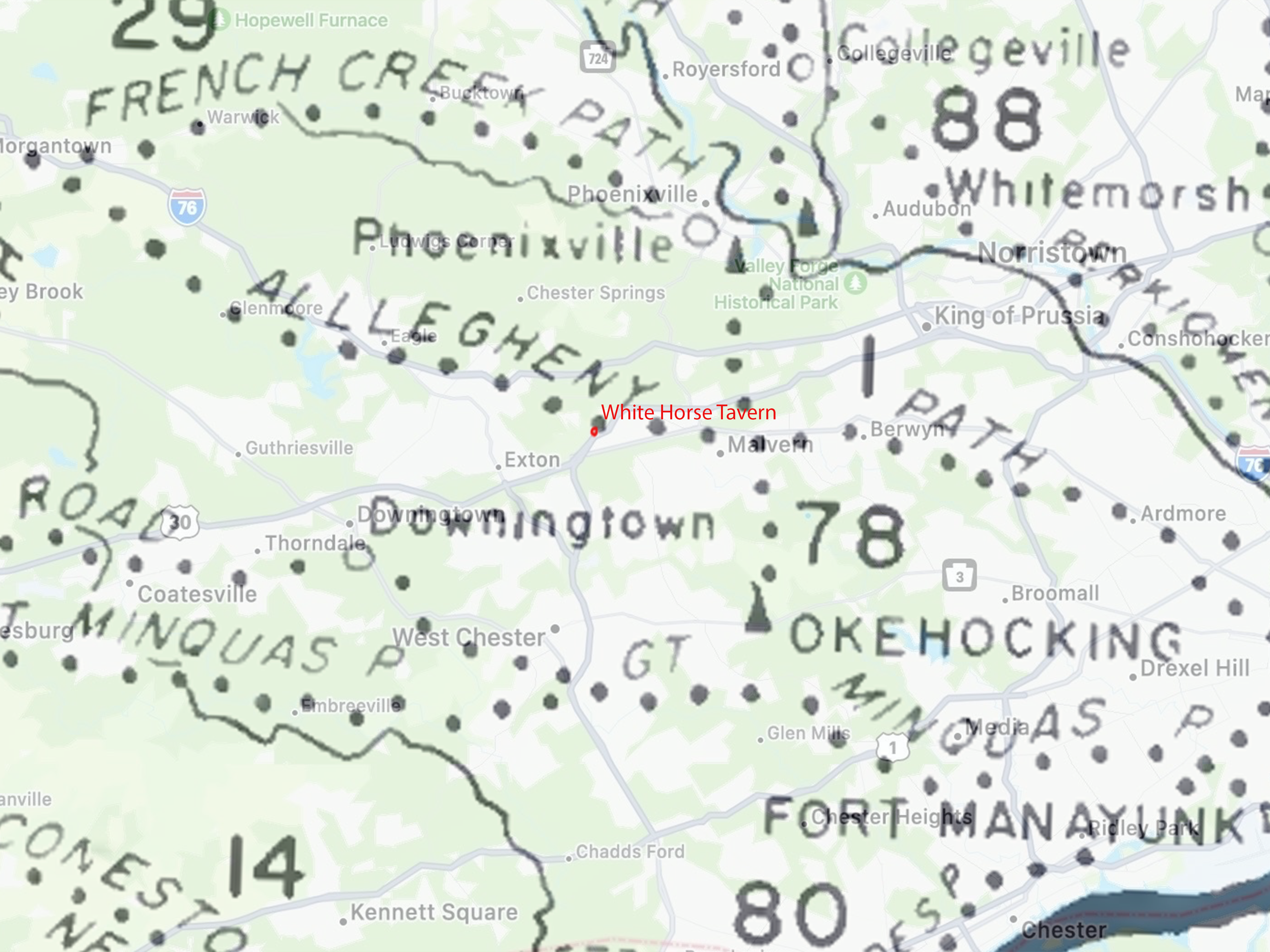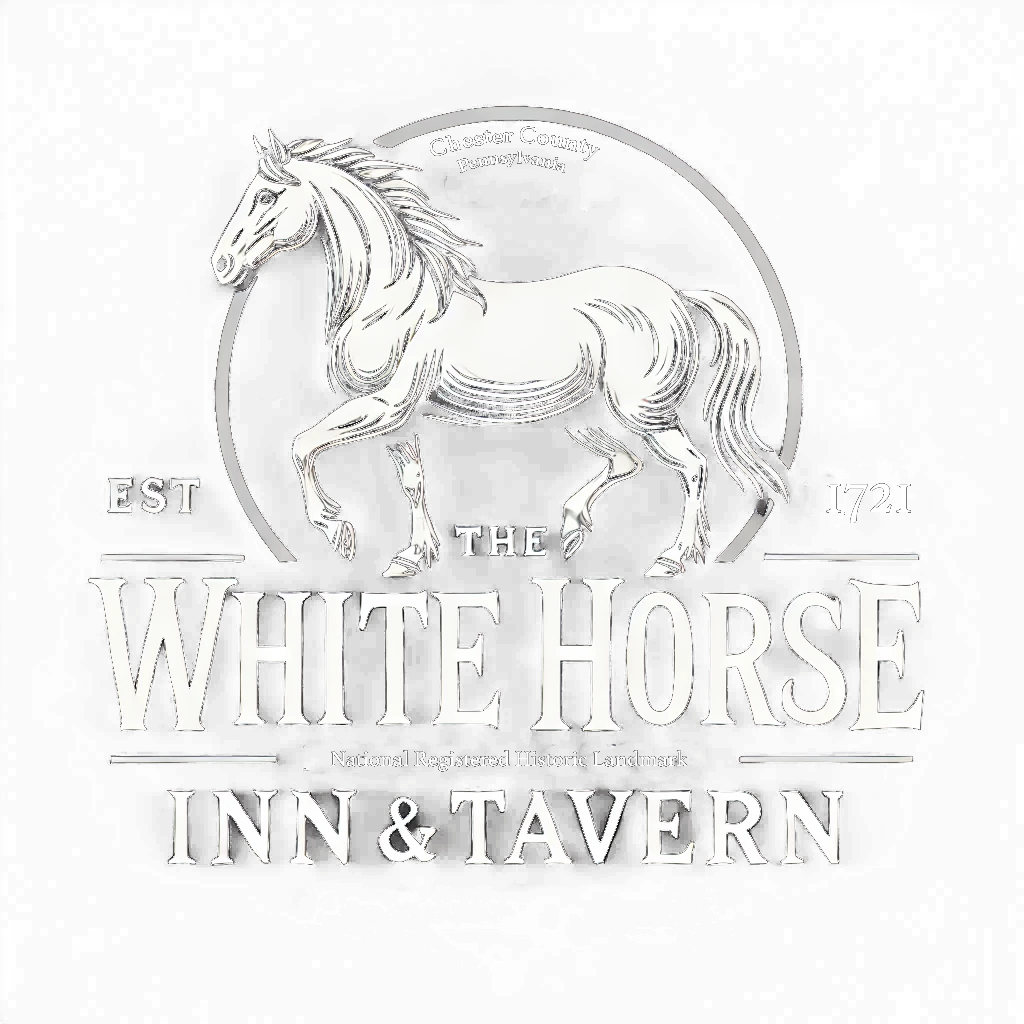Overlaying a map of Native American paths over a map of Chester County shows the “Allegheny Path” [path no. 1] passing directly behind the White Horse Tavern. The path stretches from Philadelphia to Paxtang (now known as Harrisburg).

Paul Wallace’s history of this section of the path is quite colorful:
The section of the path between Philadelphia and Harrisburg was used by Indians and white men in the earliest colonial days. John T. Faris in Old Trails and Roads in Penn’s Land calls it “the oldest road in Pennsylvania which passed between the Delaware and the Susquehanna.”
West of the Schuylkill, the course of the Allegheny Path has been described by Margaret B. Harvey: “From the ford the road continued, as it still does, through the now existing [Fairmount] Park and to the present City Avenue, crossing it but a few rods distant from the new station, Bala, on the Schuylkill Valley R. R. . . . The road, with only a slight change in its direction, proceeds past the place once marked by cone-like cedars, and at a village formerly called Bowman’s Bridge, now Merionville, joins the old Lancaster road. The Ford road, with its continuation, the old Lancaster road, is thus the oldest highway in the state, founded upon the prehistoric Indian trail from the Delaware to the Susquehanna.”
On the coming of William Penn, the first few miles of this Indian highway were turned into a bridle path. There is a tradition, reported by Margaret Harvey, “that William Penn himself personally superintended the laying out of this road from Merion Meeting-house to Paoli, riding on horseback its entire length.”
There is some evidence that the Allegheny Path crossed the Welsh Mountains not far from where the Pennsylvania Turnpike crosses them today, in the vicinity of Loag. About a mile beyond the modern village of Conestoga, it joined what is now Pa. 23 (the Blue Rock Path) , and turning west in another two miles came to Morgantown.
— “Indian Paths of Pennsylvania” by Paul A. W. Wallace page 19

One thought on “Native American–Allegheny Path”